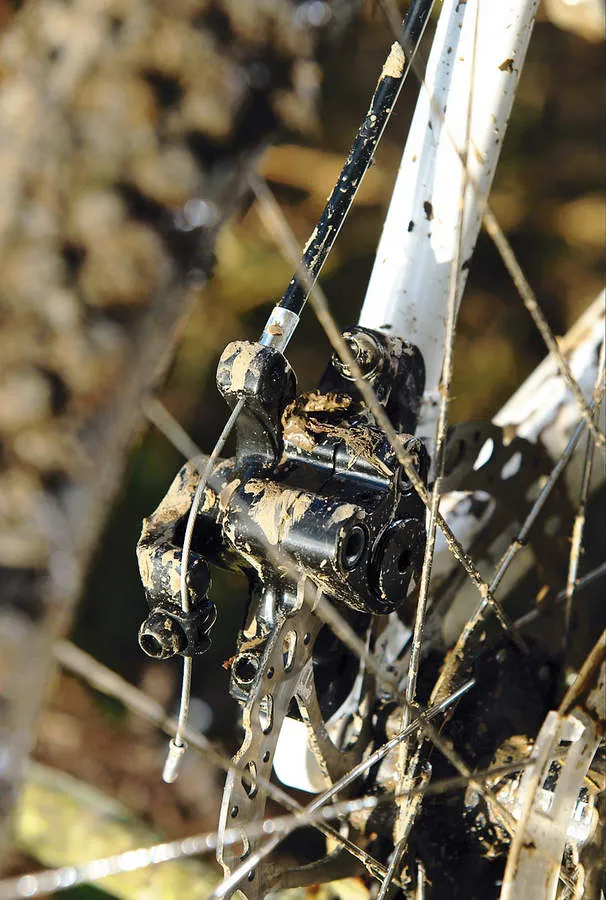Unusually for first year models, Kona’s new 120mm travel all-rounder platform extends right through the price range from aspirational to affordable. The entry-level One20 is a naturally fun bike despite obvious compromises.
There are obvious stiffness and control issues with the fork from new, and disc brake performance is likely to deteriorate rapidly, but that doesn’t stop the Kona from being an enjoyable budget suspension bike with room for improvement when funds allow. It's fun straight from the box but will get significantly better as you upgrade.
Ride & handling: Oversprung fork is a handful – but ironically makes rest of the bike handle well
Kona has always had extremely loyal fans and most of that loyalty comes from its reliable production of sweet handling bikes. Of the two One20 bikes we’ve ridden this year (the other was the £1,600 Primo), this one actually handles better.
The reason is that its RockShox Dart fork is very firmly sprung compared to the naturally soft and active rear end, so the bike tends to lean back more, which slackens the angles. The high bars also bring rider weight back and up, putting more emphasis on the back wheel, despite an unusually steep seat angle.
Add a mid-width bar and decent responsiveness from the 90mm stem and, in steering terms at least, it’s a nicely balanced bike when it comes to descending and cornering.
The stiff sprung fork is deinitely a weak link in terms of control though. We really had to slam it into the ground to get anywhere near 100mm of its claimed 120mm of travel. Even moderate steppy/rocky descents are enough to bruise hands, and it’s hard to keep the front wheel in contact for cornering/line holding traction. The good news is that you can get replacement soft spring kits for the fork which should make it run a lot smoother.
Even then, stretching the Dart chassis out to 120mm has let a lot of flex and twang into the structure, which makes the front end feel less obedient when you’re working it hard.
Despite being lower in the RockShox hierarchy, the Bar is a smoother feeling and less spike-prone shock than the Ario. Both fork and shock get useful rebound adjustment too. Add the seatstay pivot and a long stroke shock for the 120mm of wheel movement, and you get a smooth ride from the rear end of the Kona.
There’s some bob grinding gears on smooth uphills, but the payback in consistent traction is useful on technical off-road climbs. Overall weight isn’t too oppressive for the price either, though it’ll drag on longer climbs.

Frame: Stiff, with plenty of standover room and mud clearance
While the overall layout of all the new One20 bikes is the same, the two cheaper models (One20 and One20 Deluxe) get a butted 7005 aluminium tubeset rather than super-light scandium. This material change obviously increases weight, but the big one-piece rocker section is still lightweight magnesium. It’s much stiffer than the old two-halves-bolted-together-with-a-thin-bridge design that it replaces on Kona’s cross-country full-suspension bikes.
The kinked down tube and top tube and changing section shapes still give a tight feeling frame with plenty of standover clearance. The asymmetric chainstays give reasonable mud room behind the diagonal bridge and the crisply machined dropouts tuck neatly into the seatstays via forked ends. New for ‘09 laser-etched top caps on the bearings give a quality look, too.
As usual for Kona, a finely spaced sizing structure makes it easy to find an accurate fit rather than a compromise. You'll need to whip out the seatpost regularly, though, as the rearward facing seat slot is liable to swallow a fair amount of rear wheel spray on wet rides.
Equipment: Upgrade the fork and brakes to unleash bike's full potential
As you’d expect, the kit reflects the cost, but there’s some good stuff on board. The Shimano drivetrain is a highlight and the tyres and wheels should perform well wherever you ride. Although the skinny high-rise bar looks wonky, the actual cockpit dimensions are fine and the basic saddle is comfy enough as long as you tighten the seatpost.
We were surprised at the effectiveness and power of the cable disc brakes too, although there’s a deinite response lag and spongier feel than even basic hydraulics. Keeping cables clean and checking for pad wear is essential.
Sticking in a better 130mm travel fork is an obvious upgrade that would hugely improve the ride. The good news is that the potential performance and existing enjoyment the Kona provides makes it a worthy upgrade platform at this price.




